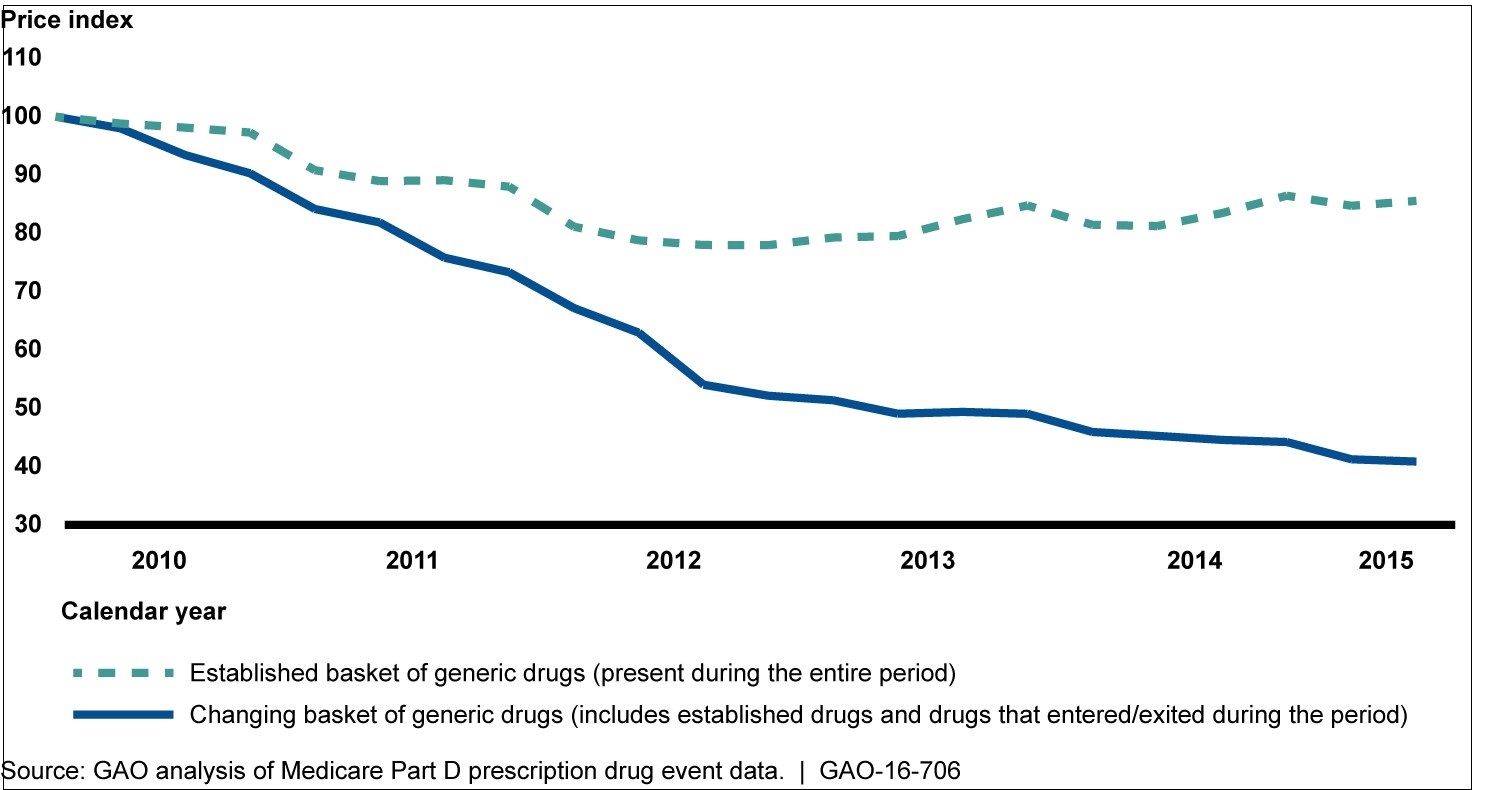Between 2010 and early 2015, the prices of generic drugs provided under Medicare Part D declined by nearly 60 percent – dramatic savings that helped leaven U.S. health care costs, according to a new report by the Government Accountability Office (GAO).
Generic drugs have long served as a counter-weight to pricey brand name prescription drugs. While they account for 88 percent of the 4.3 billion prescription drugs dispensed annually, they represent only 28 percent of the total price, according to industry experts. On average, retail generic drug prices are 75 percent to 90 percent lower than retail prices of brand-name drugs, by some estimates.
Related: Clinton Calls for Powerful New Panel to Crack Down on Drug Price-Gouging
The newly released study suggests that more robust government approval and marketing of generic drugs will be an important element in any long-term government effort to combat soaring drug prices--but the realities are more complex.
The GAO study of 2,378 generic drugs between the first quarter of 2010 and the second quarter of 2015 showed a decline in price on average of 59 percent. Some of the steepest drops in prices were for generic drugs that had recently been brought into the market.
However, on closer examination, researchers discovered that nearly half of the “basket” of drugs studied that had been on the market for a longer time – 1,441 in all – began to rise in price fairly dramatically after only briefly dipping in cost. Indeed, more than 300 of the 1,441 more established generic drugs analyzed had at least one “extraordinary price increase” of 100 percent or more between 2010 and 2015, according to the report.
“GAO found that drugs with extraordinary price increases moderated the overall decline in generic drug prices,” the report stated. “Additionally, the extraordinary price increases generally persisted for at least one year and most had no downward movement after the extraordinary price increase.”
Related: Will Mylan’s $300 Generic EpiPen Packs Quell Pricing Firestorm?
Medicare provided health care coverage to nearly 54 million beneficiaries, including more than 40 million seniors who were enrolled in the Part D drug plan that provides subsidies for drug purchases. Although the report focused on generic drugs purchased through Medicare Part D, policy experts and lawmakers no doubt will mine the document for clues to addressing the larger challenge of mounting drug costs throughout the health care system.
Earlier this month, Democratic presidential nominee Hillary Clinton unveiled plans for a government commission with the authority to compete with or penalize pharmaceutical companies like Mylan, Valeant and Turing that jacked up prices of life-saving drugs that had been on the market for many years.
The commission is part of a broader array of proposals advocated by Clinton and other Democrats to rein in prescription drug costs, including encouraging or expediting the introduction of rival generic brands. The U.S. spent about $297.7 billion on retail prescription drugs in 2014, according to industry figures. That amounted to roughly 12 percent of the estimated $2.6 trillion expended on overall personal health care.
Related: Two Big Reasons Prescription Drug Prices Are So Much Higher in the US
One of the biggest problems for consumers, health insurers and government agencies in recent years has been the introduction of new, high-performance biologic drugs with staggering retail. A prime example is Gilead Science’s Sovaldi and Harvoni drugs for treating the infectious hepatitis-C virus that can cost as much as $100,000 for a full treatment.
Some generic drug prices have also risen at outrageous rates. For instance, between 2008 and 2015, drug manufacturers increased the prices of nearly 400 generic drugs by over 1,000 percent, according to a recent study.
Drug producers and other stakeholders told the GAO that many factors can spark competition and drive up the prices of generics. Those factors include “raw material shortages, production difficulties, consolidation among manufacturers, and a backlog of new generic drug applications awaiting federal review.”

Here’s How to Stop Price Gouging by Drugmakers Like Mylan
Chip Davis, President and CEO of the Generic Pharmaceutical Association, a trade group, hailed the GAO study as a validation of the important role that generic drugs play in moderating overall health care costs.
"At a time when everyone is looking for cost saving solutions, it is important to note that the GAO findings are consistent with the prevailing market trend — generic drug prices overall continue to decline year over year,” he said in a statement. “Generic drugs are 88 percent of prescriptions dispensed but only 28 percent of costs. This means that generic drugs are overwhelmingly responsible for making medicines accessible and affordable in the United States.”
“For example,” he added, “spending on medicine in public programs such as Medicare would nearly double without the availability of generic drugs.”





